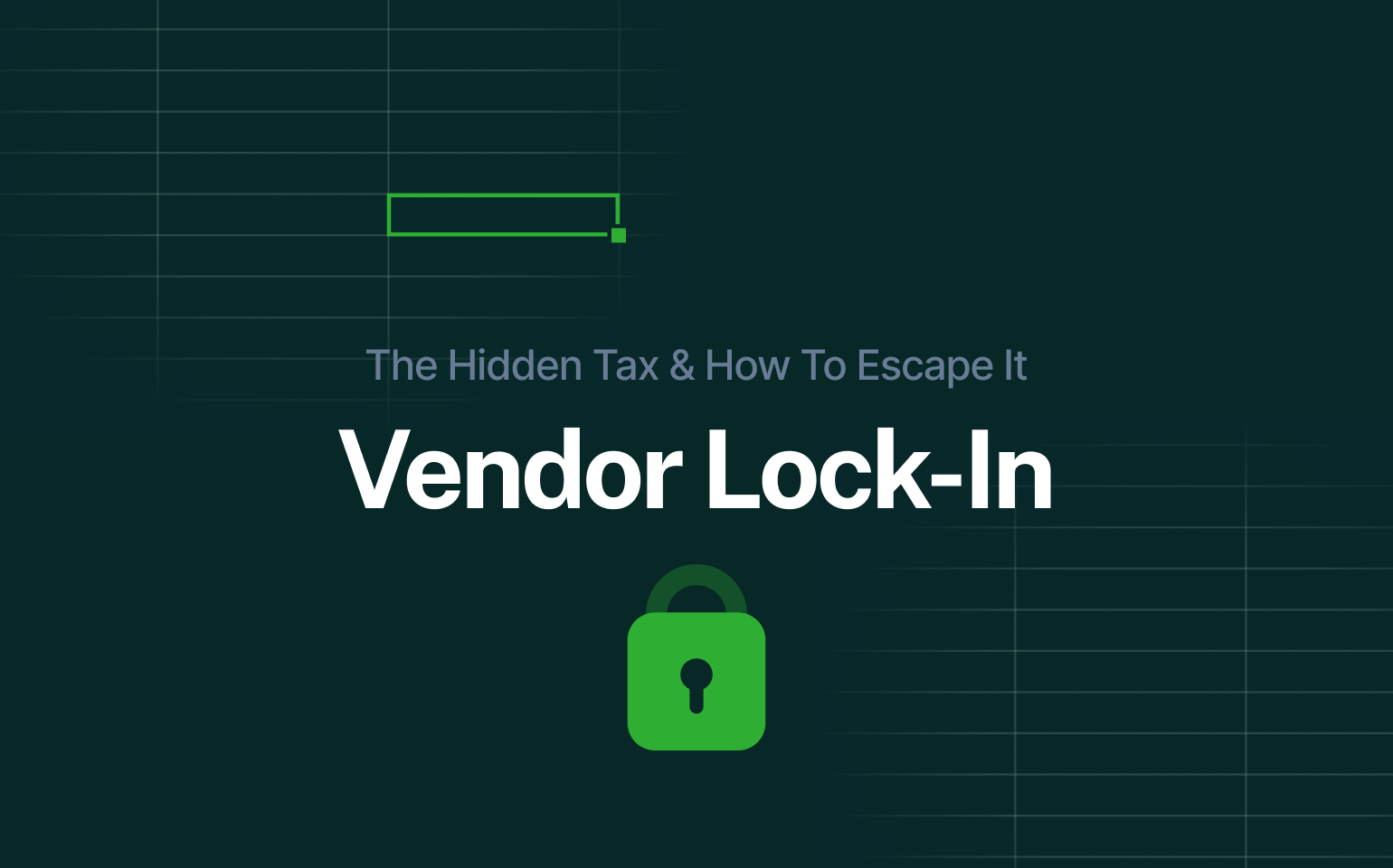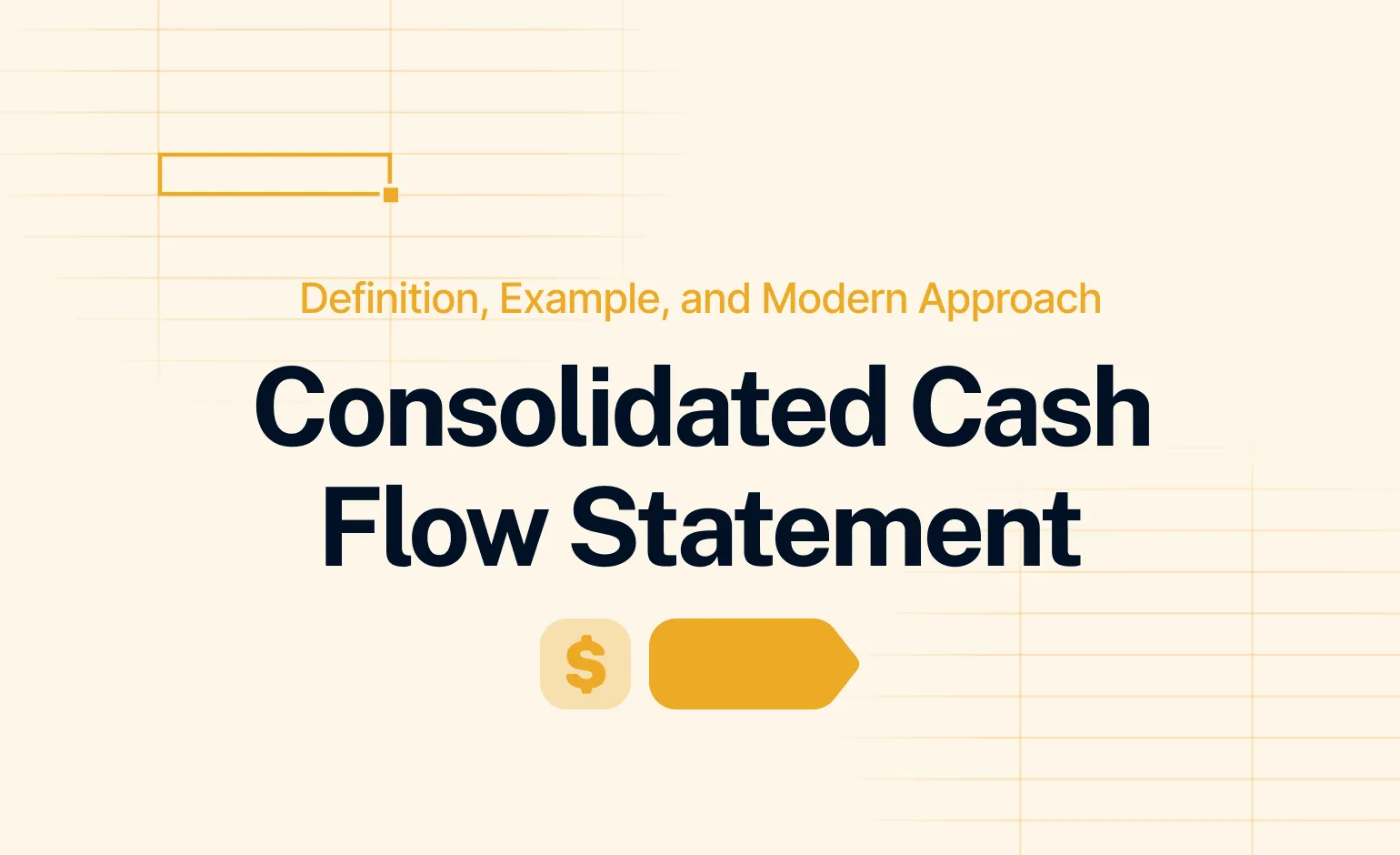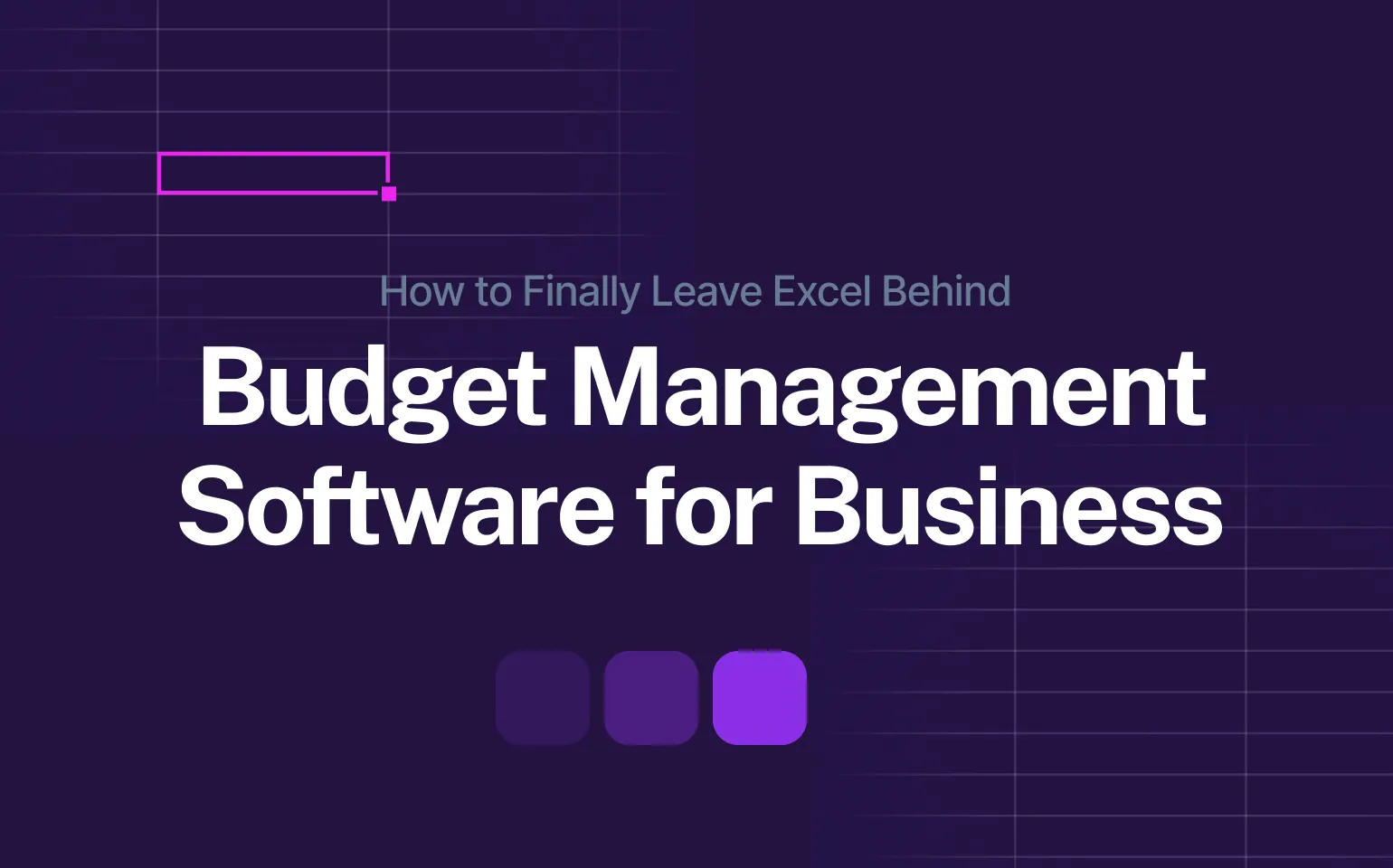Vendor Lock-In is Bleeding Your Company Dry
Vendor lock-in doesn’t start with chains.
It starts with a handshake.
You didn’t just buy software.
You bought a trap.
It didn’t look like one. It looked like progress. Like the safe, “enterprise-grade” choice. The sales team showed up with their tailored demo, packed full of buzzwords like “scalability,” “future-proof,” and “seamless integration.” You nodded. You bought. You deployed.
Now, a year in, you’re realizing what you actually bought: a beautiful box with no handles, welded shut from the outside.

Every time you want to make a change, someone sends you a quote.
Every time you ask for a simple tweak, it becomes a “custom implementation.”
Every time you wonder what it would take to switch platforms, you feel a cold pit in your stomach.
That’s vendor lock-in.
And it’s not just bad business. It’s bleeding your company dry.
Read: FP&A Software – A Practical Guide for Finance Teams
Vendor Lock-in Doesn’t Feel Like Chains. It Feels Like Paperwork.
It never starts as outright control. That would be too obvious. Lock-in starts with “convenience.”
It starts when your data quietly stops being portable.
When your models start needing their proprietary syntax.
When your reports can only be exported in formats designed to look open but break when pushed elsewhere.
When integrations rely on ten-layer middleware that somehow needs their consultants to function.
You look up one day and realize your workflows don’t belong to you anymore. They belong to the vendor. And they’re billable.
That’s the hidden tax of vendor lock-in. Not the subscription. Not the licenses.
The cost of staying stuck, even when enterprise planning is broken and everyone knows it.
Complexity Isn’t a Bug. It’s the Whole Damn Business Model.
Traditional enterprise vendors love complexity. They don’t sell simplicity; they sell opacity. Every “advanced feature” comes with fine print. Every “customization” creates another layer of glue that keeps you locked in. Every “partner integration” is a backdoor for yet another consulting gig.
And guess what? They’re not trying to fix it. Because the more tangled your setup becomes, the more you depend on their people to navigate it. Their goal isn’t to give you control, it’s to convince you control is too risky, too expensive, too “non-standard.”

They’ll nod empathetically while explaining why your simple change request needs a change order. Then they’ll bill you for three days of “solution design.”
This isn’t a partnership. It’s ransom with better branding.
This is the real face of vendor lock-in.
The Fear Machine Is Real
When you finally start asking the right questions: “What would it take to move off this thing?”, that’s when the fear campaign begins.
Vendor lock-in is often disguised as compliance risk.
They’ll start talking about compliance.
What if switching breaks your audit trails? What if you lose your SOX readiness? (Spoiler: you won’t.)
They’ll start warning about training and adoption.
Your team is too used to the system. Retraining will take months. (Spoiler: they already hate the current one.)
And of course, they’ll dangle the specter of data loss.
Exporting could “compromise integrity.” (Translation: it’s messy because they made it messy.)
It’s all carefully crafted to make staying look safer than leaving, even if staying costs more, slows you down, and kills any hope of agility.
While You’re Trapped in Vendor Lock-In, the Market Moves On
That’s the part no one tells you.
While you’re stuck submitting Jira tickets to change a column header, your competitors are experimenting, adapting, and scaling. While your finance team is emailing CSVs back and forth because your “reporting module” needs a patch, they’re building real-time models in minutes. While you’re budgeting for the next round of vendor-led “optimization,” they’ve already rolled out a whole new forecasting process, without asking anyone for permission.
Lock-in doesn’t just cost money. It costs momentum.
That’s the silent impact of vendor lock-in – lost speed, lost innovation, and lost ground.

So, How Do You Escape?
You stop playing the game.
You stop accepting the lie that complex = powerful.
You stop buying platforms that require certified consultants to use.
You stop signing five-year contracts that punish you for wanting to leave.
You stop building your business on foundations someone else controls.
And most importantly: you start demanding tools that give you control, not a hotline to someone else’s roadmap.
Because true enterprise software isn’t just about features. It’s about freedom.
That’s Why We Built Farseer Differently
We didn’t build a “solution.” We built an escape route from vendor lock-in.
Farseer was designed from day one for user autonomy. No consultants. No middlemen. No ticket queues. Just powerful, real-time planning and reporting that your team can actually own.
- Your data? Yours. Not hidden in proprietary formats, not held hostage in some mystery warehouse.
- Your models? Flexible, editable, intuitive. Change them yourself. Break them. Rebuild them. No IT bottlenecks required.
- Your workflows? Live, collaborative, and yours to adapt. Because business changes fast, your software should keep up without calling in reinforcements.
- Your exit plan? Built in. Because we’re confident in our product, not scared you’ll leave.
We don’t want your dependency. We want your results.
Enterprise Software Has Been Broken for Too Long
You’ve been sold the myth that customization equals power. That consultants are just part of the deal. That lock-in is the price of stability.
It’s not.
You don’t need software that traps you. You need software that gets out of your way.
Let your team move fast. Let your finance people think instead of chasing. Let your business breathe again.
And if your current vendor doesn’t like that idea? Good.They’re not the ones solving your problems. They’re just profiting from them.
Ready to Break Out?
We’re Farseer. We’re building software for people who are done being locked in, left behind, and charged extra to press “export.”
Let’s build something better.
Book a demo.



